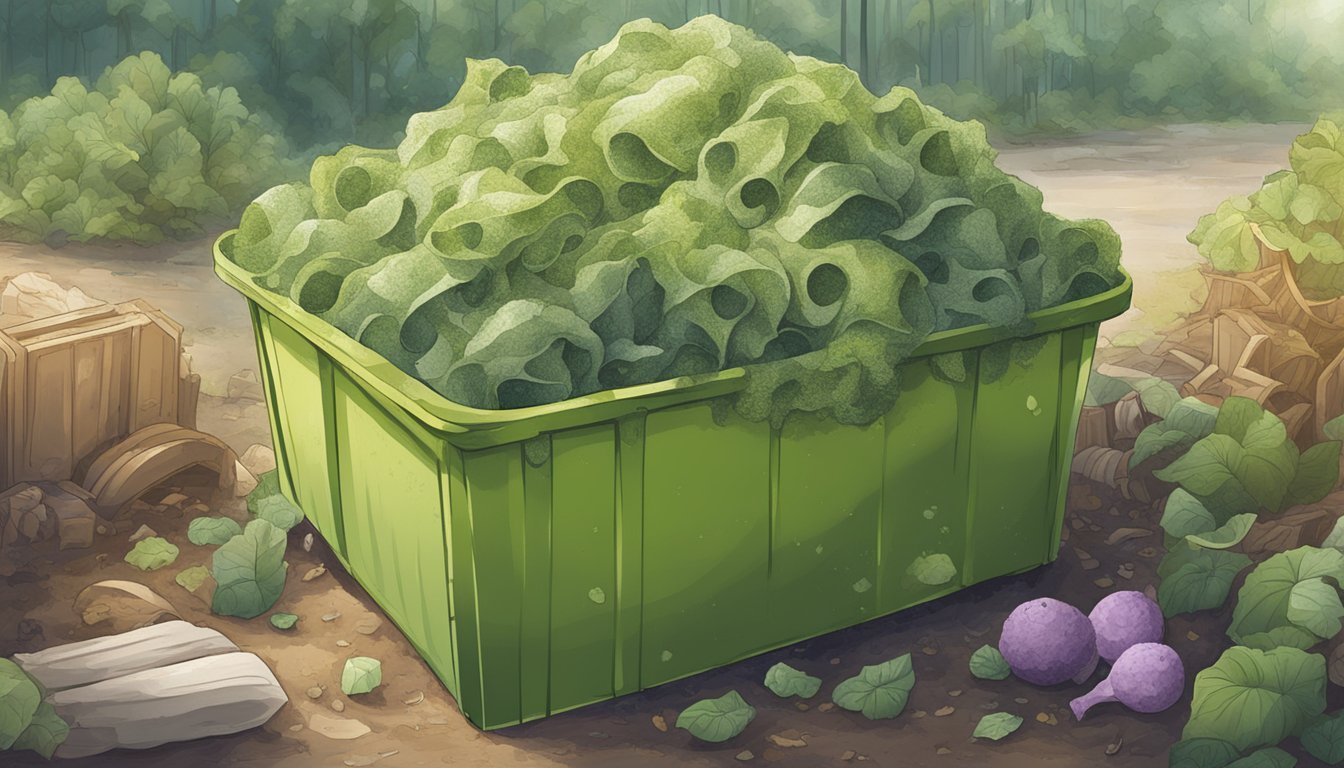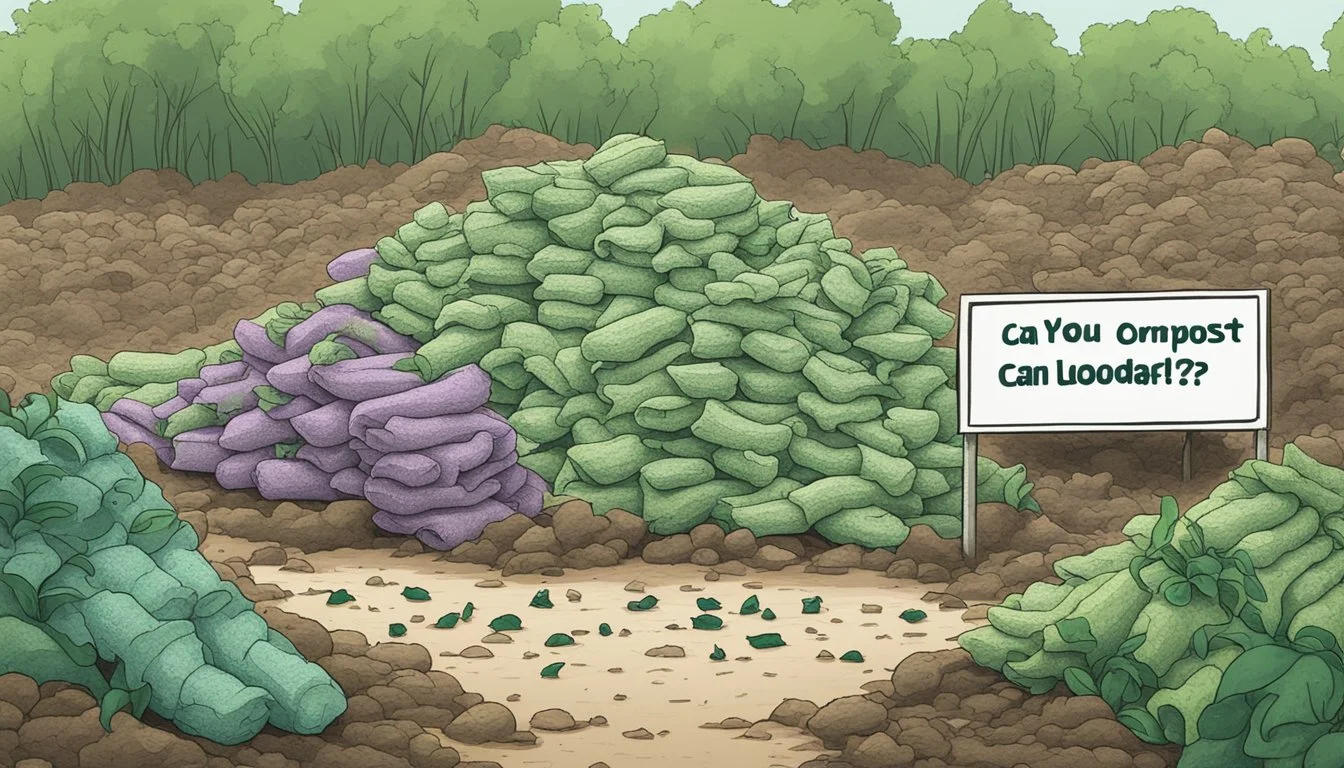Can You Compost Loofahs?
Unpacking Biodegradability and Best Practices
Loofahs are a popular bathing accessory known for their exfoliating properties. Traditionally made from the fibrous interior of the loofah gourd, they offer an eco-friendly alternative to synthetic scrubs. With the increasing awareness about environmental conservation, it’s important to understand the end-of-life options for products we use daily, particularly whether they can be composted to enrich soil instead of contributing to landfill waste.
Natural loofahs are biodegradable and can indeed be composted after their lifespan in the shower comes to an end. Composting is a natural process that breaks down organic matter, such as food scraps and plant material, into a nutrient-rich soil amendment. The fibrous texture of a natural loofah allows it to break down efficiently in a compost pile, making it a beneficial addition that can help improve soil structure and fertility.
While natural loofahs can easily go into a compost bin, plastic loofahs are not suitable for composting as they are made from synthetic materials that do not break down in the same manner. Disposing of these items requires different considerations to minimize environmental impact. Therefore, when thinking about the compostability of loofahs, distinguishing between natural and synthetic variations is crucial for proper disposal and environmental sustainability.
Understanding Loofahs
Loofahs, commonly used for exfoliation, present a choice between eco-friendly natural options and common synthetic varieties. This section explores the contrast between the two, the Loofah lifecycle, environmental impacts, and their maintenance.
Natural Loofahs vs. Plastic Loofahs
Natural loofahs are derived from the luffa plant, a vine-grown member of the same family as pumpkins, squash, and gourds, and are completely biodegradable. Often, they look like elongated cucumbers or zucchini and can be grown in one's own garden. In contrast, plastic loofahs, commonly known as bath poufs, are made from synthetic materials like polyethylene and are non-biodegradable, contributing to landfill waste and potentially shedding microplastics into the water system.
The Lifecycle of a Loofah
The life of a natural loofah begins as a seed and progresses through the growing season, typically in warm climates such as China. During summer, the loofah gourds are harvested once they mature. Post-harvest, the skin is removed, and the fibers are cleaned to create the final scrubbing product. With time, when a loofah is worn out or not in use, it can biodegrade, returning organically to the environment.
Loofahs and the Environment
Natural loofahs are an eco-friendly choice as they are a renewable resource and do not require synthetic inputs like pesticides or herbicides for cultivation, making them a sustainable and plastic-free option. On the contrary, synthetic loofahs can have a lasting impact on the environment due to their materials and the risk of introducing microplastics into ecosystems.
Usage and Care of Loofahs
Proper maintenance of a loofah is essential for hygiene and longevity, whether natural or plastic. They should be rinsed thoroughly with clean water to remove soap and debris, allowed to dry fully to deter mold and bacteria. Natural loofahs may be sanitized with baking soda or diluted vinegar. Loofahs should be replaced regularly to avoid skin irritation from overused materials and to maintain effective exfoliation.
Composting Basics
Successful composting converts organic waste into a nutrient-rich material beneficial for gardening. Here's how to understand and manage the transformation of scraps and clippings into compost.
The Science of Composting
Composting is a natural process where microorganisms, such as bacteria and fungi, break down organic matter into simpler substances. Nitrogen-rich materials, often green in color, include fruit and vegetable scraps, coffee grounds, and cuttings from the garden. Carbon-rich materials, typically brown, comprise newspaper, eggshells, and dry leaves. The right balance of these elements, along with sufficient water and air, fuels the decomposition.
Materials Suitable for Composting
Compostable materials can include a wide array of organic matter, notably:
Greens (Nitrogen-rich)
Vegetable peels
Fruit scraps
Grass clippings
Coffee grounds
Browns (Carbon-rich)
Dry leaves
Cardboard rolls
Newspaper strips
Sawdust
Other Compostables
Flour
Hair
Plant materials
These are layered in the compost bin to create an environment conducive for microorganisms to thrive.
Setting Up Your Compost
To set up a compost bin, select a well-draining location in your garden. The bin should allow for aeration and easy access. Start with a layer of browns, then add your greens and a layer of soil. Repeat these layers, aiming for a roughly equal mix of browns and greens. A well-constructed pile promotes efficient composting.
Maintaining a Healthy Compost
Regular maintenance is key to a robust decomposition process. Turn the compost pile every few weeks to aerate it, which accelerates the breakdown of materials. Keep the pile moist, but not waterlogged. Over time, the bottom of the pile will yield rich, well-decomposed compost ready to fertilize garden beds.
Composting Loofahs
Composting loofahs provides a sustainable way to dispose of used natural sponges from the kitchen and bathroom, focusing on the promotion of a zero waste lifestyle while enriching soil quality.
Practical Steps to Compost Loofahs
Natural loofahs are biodegradable and compostable, fitting perfectly into eco-friendly practices. To compost them efficiently:
Store Used Loofahs: Accumulate them in a dry area to prevent mold development before they're ready to be composted.
Prepare for Composting:
Cut Them Up: Snip the loofahs into smaller pieces to accelerate decomposition.
Balance the Compost Mix: Incorporate a mix of green (e.g., vegetable scraps) and brown (e.g., dried leaves) materials with the loofah pieces to ensure proper composting.
Ensure Adequate Conditions:
Moisture: Keep the compost pile damp but not too wet to prevent rotting and mold.
Aeration: Turn the pile regularly to introduce oxygen, which is crucial for the composting process.
Troubleshooting Common Issues
When composting loofahs, one may encounter a few problems:
Mold Growth: If the loofahs are too wet, they can become moldy. To fix this, make sure they are stored in a dry place before composting and that the compost pile is well-aerated.
Pests: Loofahs themselves do not typically attract pests, but if the compost bin is not managed properly, it could. Address this by ensuring the compost bin is sealed correctly and maintained regularly.
By following these steps and being mindful of possible issues, one can successfully incorporate loofahs into a composting routine, contributing to a cleaner planet and a healthier soil ecosystem.
Benefits of Composting Loofahs
Composting loofahs contributes significantly to a sustainable waste management system. When individuals choose to compost natural loofah sponges, they turn what would be trash into a resource that can fertilize and enrich the soil.
Organic Waste Reduction: Composting converts loofahs into nutrient-rich humus, which decreases the volume of organic waste in landfills. This is beneficial as it minimizes methane emissions, a potent greenhouse gas that contributes to climate change.
Soil Enrichment: Composted loofahs enrich the soil with organic matter, improving its structure and moisture retention capabilities. This makes the soil healthier and better equipped to support plant growth.
Eco-Friendly Practices: By composting loofahs, they engage in eco-friendly practices that align with a zero waste lifestyle. Natural loofahs are plant-based and biodegradable, unlike their plastic counterparts, hence they do not persist in the environment post-disposal.
Use in Sustainable Agriculture: Farmers and gardeners can utilize composted material as a natural alternative to chemical fertilizers, promoting sustainable agricultural methods.
Ease of Processing: Loofahs are easy to incorporate into a compost bin. Cutting them into smaller pieces accelerates their breakdown process.
Versatility: Composted loofahs may also serve various purposes, such as creating a habitat for beneficial microorganisms essential for a balanced compost ecosystem.
In summary, composting loofahs not only aids in waste reduction but also supports the creation of healthy, fertile soil, embodying eco-friendly principles that benefit the environment.
Alternative Uses for Loofahs
Loofahs, traditionally used as bath poufs for exfoliation, have versatility that extends beyond personal care. In the kitchen, loofahs serve as effective cleaning scrubs for dishes and surfaces due to their abrasive texture. Crafted from the fibrous skeleton of the loofah plant, these sponges are sustainable and biodegradable, making them a preferred choice for environmentally conscious households.
These plant-based sponges can be used as:
Heavy-duty dish scrubbers: They handle baked-on food with ease.
Vegetable brushes: Their firm yet flexible fibers are perfect for cleaning root vegetables without damaging the skin.
Moreover, gardeners may use loofahs as growth supports for climbing plants. By attaching pieces of loofah to a fence or trellis, they can encourage the growth of various fruits and vegetables, providing a natural and eco-friendly support system. This method is particularly beneficial for cucumbers, peas, and tomatoes, allowing them to ripen evenly.
Not merely confined to scrubbing, these sponges can also aid in cooking. Once dried and sliced, pieces of loofah can be incorporated into stir-fries or soups. When cooked, they become tender and are known to add a mild, slightly sweet flavor to the dishes.
Here are further possibilities for loofah utilization:
Potpourri holders: Their porous texture is ideal for absorbing and releasing scents.
Biodegradable seed starters: Instead of plastic pots, loofah sections can be filled with soil and seeds, offering an eco-friendly start for seedlings.
Thus, loofahs exhibit a multipurpose functionality, transforming from bath poufs to sustainable tools within both the domestic and gardening realms.





